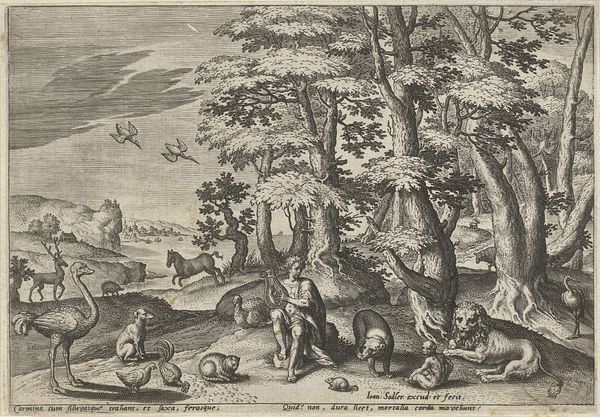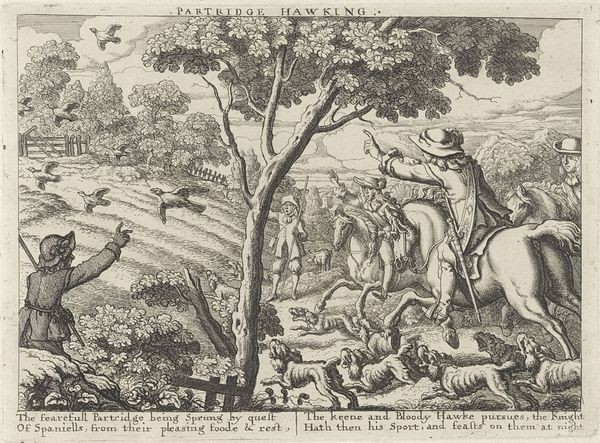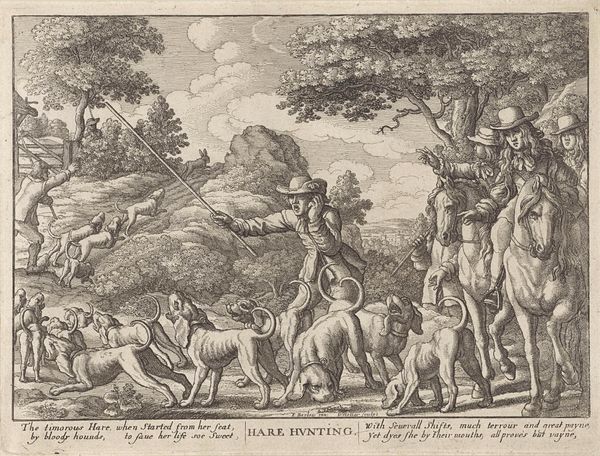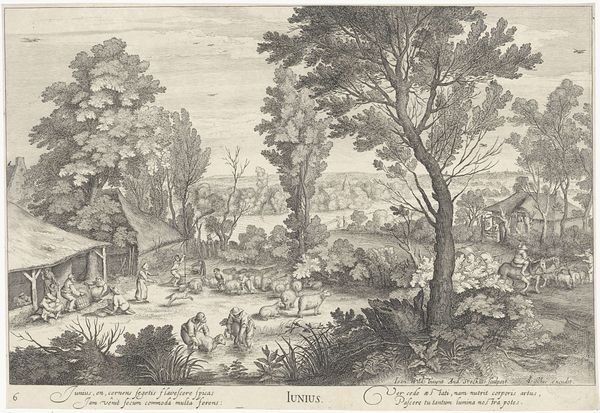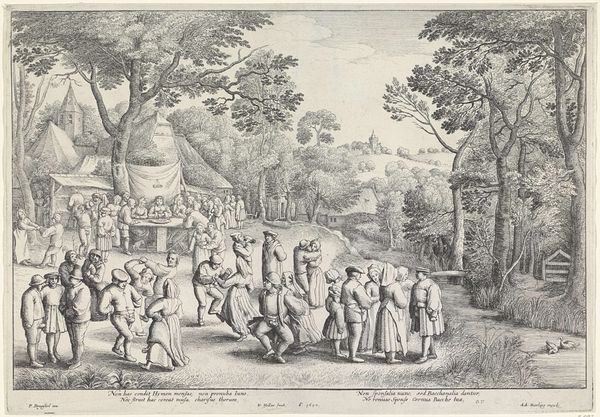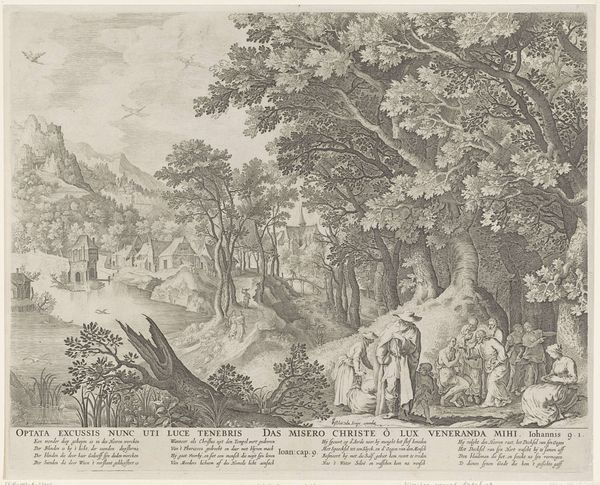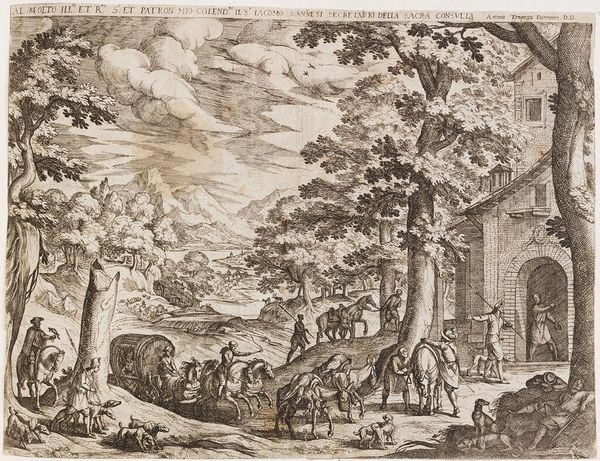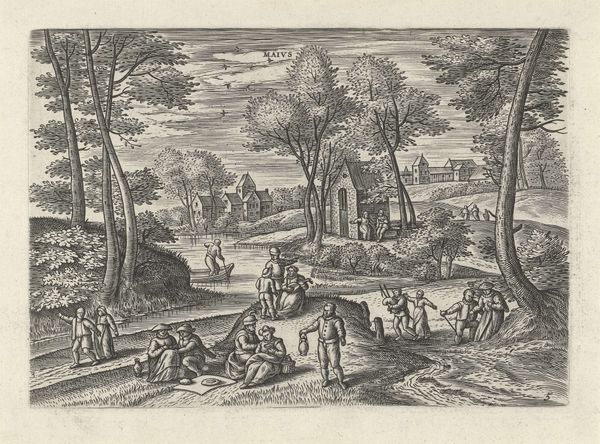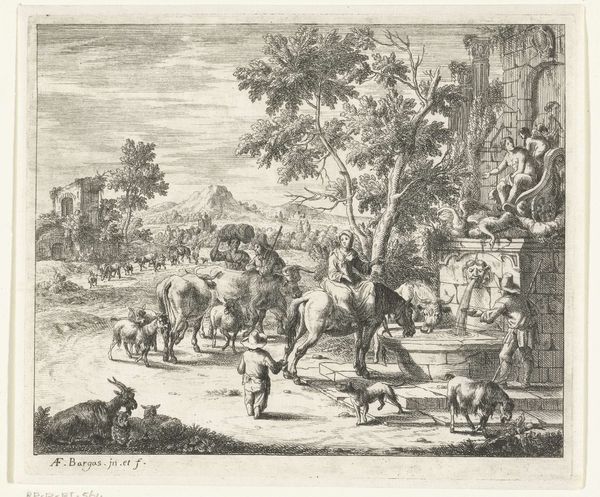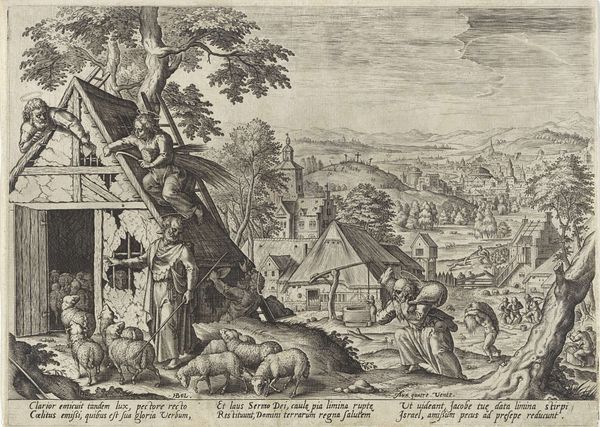
print, engraving
#
narrative-art
#
baroque
# print
#
landscape
#
figuration
#
genre-painting
#
history-painting
#
engraving
Dimensions: height 235 mm, width 330 mm
Copyright: Rijks Museum: Open Domain
Curator: Hendrick Hondius I's "Johannes de Doper predikt tot de menigte," from around 1600, an engraving held here at the Rijksmuseum. Immediately strikes me as a scene brimming with detail and… well, I can almost hear the quiet murmur of the crowd. Editor: Yes! It’s got this hushed intensity. The light seems to be pushing forward, toward that clearing in the trees, right where John the Baptist stands. Is he on a little stage, or is that just higher ground? It makes him feel central, but also vulnerable somehow. Curator: Indeed. Note the printmaking; see how Hondius uses varied line weights to create depth and texture. It’s a technique born from the workshops of the period but used to, more grandly, spread didactic messages and to tell stories accessible to the wider public, making it quite innovative, especially during this period! Editor: I like that “accessible." Engravings always feel like echoes of something else to me… a memory of a painting, or maybe a play acted out in someone's backyard. I mean, look at those guys with their instruments in the lower left… are they supposed to be commenting on the scene? Or just hanging out? It’s like he captured a genuine moment of life unfolding… and, oh, the horses are a fancy touch! Curator: They’re interesting! But it’s less a "genuine" slice of life and more of a carefully constructed visual sermon. Hondius, and printmakers generally, relied heavily on the patronage system to create such works… considering who sponsored it adds another interesting layer. Editor: Okay, sure, sponsorship, context, all that… But you can’t deny it *feels* spontaneous. That little kid by the tree on the left. He just seems bored and he's wandering. It kind of messes with the solemnity. I appreciate it! Curator: What this print provides, beyond a Biblical narrative, is insight into the mechanics of visual communication during the early modern period—a tangible example of how images were produced, distributed, and consumed in 17th century Europe. That process itself, for me, deepens my appreciation. Editor: I suppose that's it isn't it? How different interpretations of the same image—the touch of spontaneity versus structured method of dissemination--both highlight the artist’s success. Thank you!
Comments
No comments
Be the first to comment and join the conversation on the ultimate creative platform.
